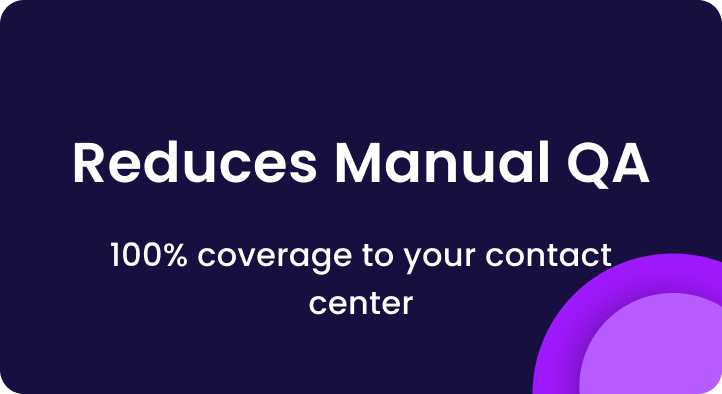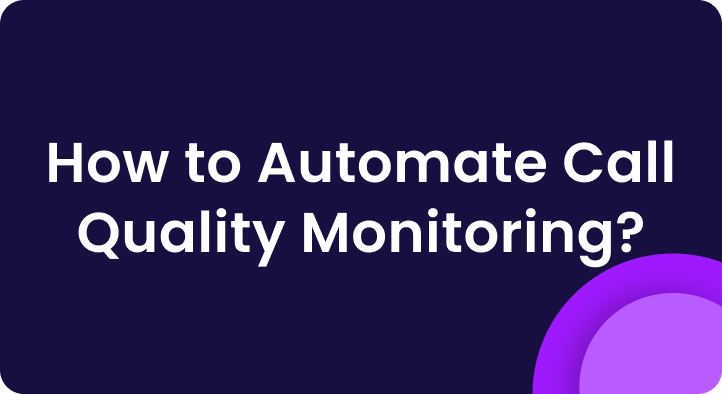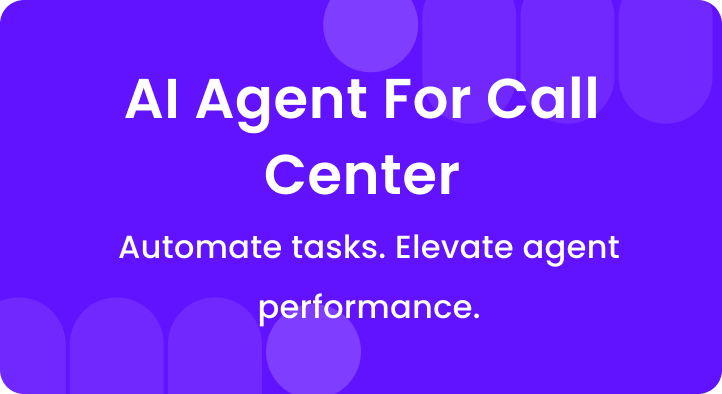Improving agent performance isn’t about watching everything. It’s about watching the right things, consistently, and in context.
Too many teams get stuck tracking surface-level stats that look good on a dashboard but don’t actually help agents get better. If you want real performance gains, here’s where to focus.
1. Call Handling Metrics (But Dig Deeper Than AHT)
Yes, average handle time (AHT) still matters. But it doesn’t tell the whole story.
Instead of chasing speed, look at how the call was handled:
- First Call Resolution (FCR): Did the agent actually solve the issue?
- Hold Time: Were customers left waiting while agents scrambled?
- Dead Air: Was there awkward silence or confusion?
These show whether the agent was in control, not just fast.
👉 Tip: A high AHT isn’t always bad. It could mean the agent took time to resolve a complex issue, and prevented a callback. Look at this in context.
2. Quality Assurance Scores (With Specific Criteria)
A high QA score means nothing if it’s based on a vague checklist.
Break QA down into coachable behaviors, like:
- Greetings and verification are done correctly
- Script and compliance language followed
- Clear communication and tone
- Empathy and listening skills
- Proper closing and confirmation
Track each one consistently. Over time, you’ll see where each agent struggles and where they shine.
Bonus: Tag calls with themes like “missed verification” or “poor empathy.” This helps you spot patterns across agents or teams.
3. Customer Sentiment and Satisfaction
Customer feedback shows how agents make people feel, which matters more than most metrics.
Watch for:
- CSAT (Customer Satisfaction): Post-call ratings from customers
- NPS (Net Promoter Score): Would they recommend your service?
- Sentiment Analysis: Was the customer tone positive, neutral, or negative?
AI tools can analyze sentiment without waiting for survey results.
That means you can catch frustrated customer reactions even if they didn’t leave a review.
4. Script and Compliance Adherence
Especially in industries like lending or insurance, this isn’t optional.
One missed disclaimer or rushed explanation can lead to legal trouble.
Track:
- Was the script followed exactly where needed?
- Were disclaimers read word-for-word?
- Did the agent skip mandatory questions?
5. Agent Improvement Over Time
Don’t just look at performance today. Look at the progress.
Track:
- Monthly QA score trends
- Coaching effectiveness (do issues get resolved?)
- Training impact (does performance improve after sessions?)
This helps you spot agents who are improving (even if they’re not top performers yet), and those who are stuck or burning out.
Conclusion
If you want to boost performance, track fewer metrics — but track them well.
Focus on the things that actually shape customer experience: communication, resolution, empathy, and consistency.
Combine behavioral data with coaching insights. And always zoom out to spot trends, not just one-offs.
Your best-performing agents aren’t just fast or polite. They’re consistent, compliant, and improving over time.
The right metrics will help you get more of them.



